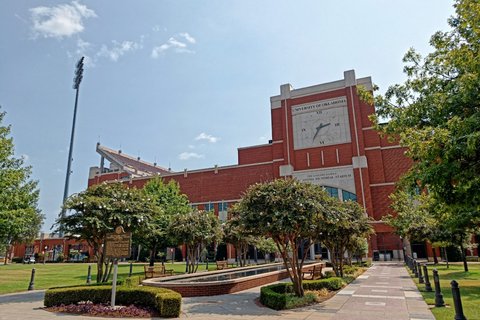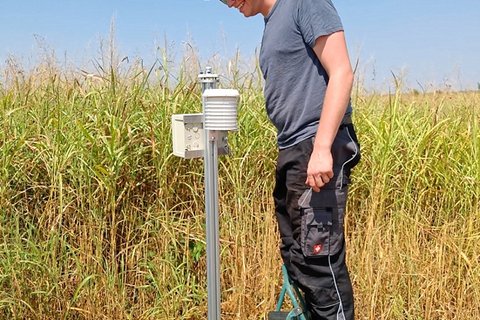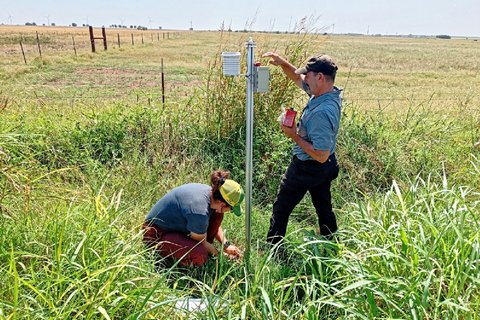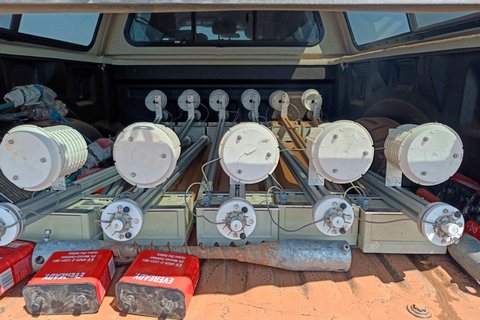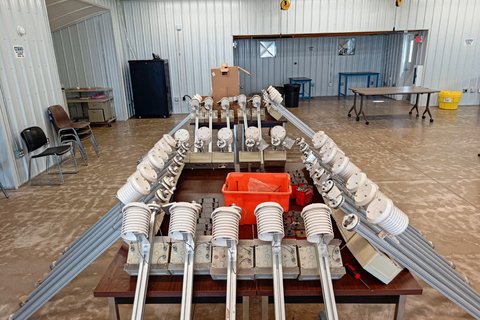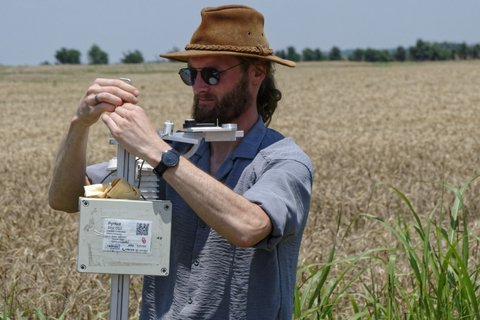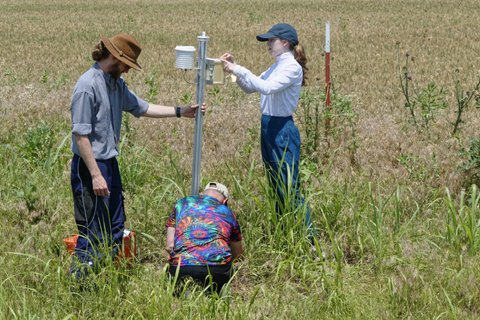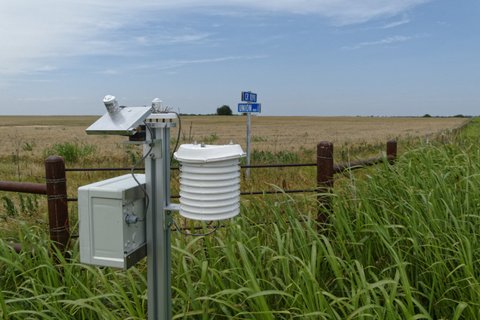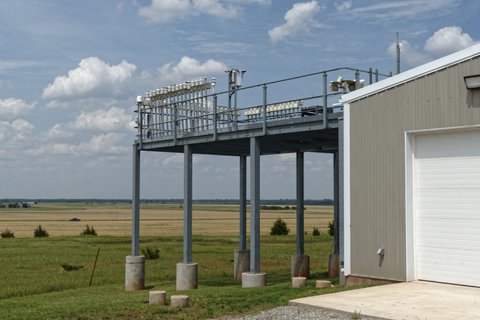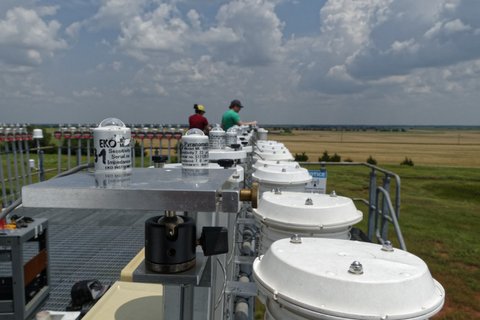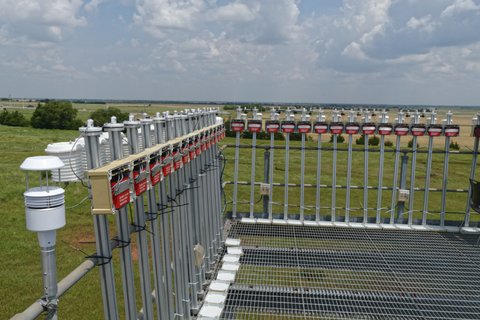Dismounting (04 September 2023)
Hi everyone,
About halfway through my trip to Norman, Oklahoma I wanted to check in with you and report on the status of our Pyranometer Network dismantling efforts.
Fortunately, my journey was much more relaxed than Jonas'. I arrived at the airport in Oklahoma City on time at 6 p.m. local time (CDT) and was immediately familiarized with the language and political customs of the Great Plains in a conversation with my Uber driver. Since the trucks were reserved for the first time on Aug. 31, I had another day on Wednesday to get to know the campus, the impressive football stadium and the city.
Thursday we went to the ARM Southern Great Plains site in 2 teams. Connor had set out to collect the stations in record time and he was to be proven right. One team took care of the single pyranometers, the other team took care of the double pyranometers. 10:15am we started, 1:40pm we had examined all stations one last time, removed the SD cards, collected them and brought them to the Guest instrument platform (GIF) Platform.
The work in the field was dusty and hot after several weeks of drought, although Thursday was still to remain the most pleasant day with "only" 34°C. Fortunately, the GIF was also air-conditioned, so that we could start dismantling the pyranometers and sorting them into the transport boxes. At the end of the day, half of the stations were packed up and we decided to continue with the rest the following day.
Before we went to the station a second time, however, I had an appointment on Friday to tour the National Weather and Storm Prediction Center in Norman. This building houses meteorology studies, university and National Severe Storm Laboratory research, and forecasting all under one roof, so it's a building full of meteorology nerds, awesome :D
After the tour we went to the site again and after a few hours we had all stations and accessories packed ready for loading into the container. However, the container loading was postponed to next week due to lack of forklift, so we will go to the site a third time. Nevertheless, we are very satisfied with the state of dismantling. However, I am still waiting for a call regarding customs clearance so that the third tour could be coordinated together at best. If there is no customs inspection, I will finish sealing the container after it is put away.
On the way back I was driven by Logan and Connor to the highway restaurant "Smokey Pokey", pickle bar included .-)
So much for the status of the dismantling and the impressions from the heart of Oklahoma. Today I also had some time to explore the capital Oklahoma City. Tomorrow is Labor Day holiday here and I will meet Jens Redemann and Connor for dinner in the evening.
Have a great week in Leipzig!
Cheers,
Oscar
Installation (15 June 2023)
The TROPOS Pyranometer Network (PyrNet) was successfully installed around the measuring station of the Atmospheric Radiation Measurement (ARM) program in the southern Great Plains of North America as part of the S2VSR measurement campaign. The PyrNet consists of 60 individual stations, each measuring solar radiation and ambient temperature with high temporal resolution. The stations are distributed within a 6 km² area around the ARM station. The aim of the measurement campaign is to investigate small-scale spatial and temporal variability of solar irradiance with respect to micro- and macrophysical properties of clouds and in comparison to satellite observations. The data are read out and processed on a weekly cycle. The PyrNet will now measure for 3 months in Oklahoma.
Jonas Witthuhn
Preparation (02 June 2023)
The TROPOS Pyranometer Network (PyrNet) is currently located in the southern Great Plains of North America. In preparation for a measurement campaign (S2VSR, https://www.arm.gov/research/campaigns/sgp2023s2vsr) in and around the measurement station of the Atmospheric Radiation Measurement (ARM) project, 64 individual PyrNet stations were installed on the ARM host platform (photo). All sensors will be measured there for a week and calibrated with the help of reference sensors at the ARM site to ensure best comparability. Afterwards, 60 PyrNet stations will measure within 6 km² around the measuring station for another 3 months. The aim is to investigate small-scale spatial and temporal variability of solar irradiance with respect to micro- and macro-physical properties of clouds and in comparison to satellite observations.
Jonas Witthuhn
S2VSR - PyrNet at ARM SGP
As part of the S2VSR (Small-Scale Variability of Solar Radiation) campaign, a network of 60 sensor stations is being set up at ARM's Southern Great Plains (SGP) Observatory. In the prairies of the US West, these stations will collect data on global radiation, temperature and humidity every second. The goal of the campaign is to study small-scale variations in solar radiation at the Earth's surface that are not accurately captured by current satellite observations and models. The observations will be compared with surface and satellite measurements to assess representativeness and improve our understanding of the influence of clouds on solar radiation.

